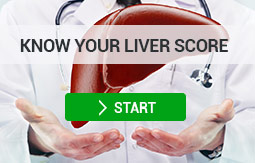Knowing how to prevent and recognize symptoms of NASH (non-alcoholic steatohepatitis), a type of non-alcoholic fatty liver disease, can help reverse the liver disease in its early stages or prevent further damage in its later stages. Read our article to learn about NASH and how you can protect yourself.
What’s in this article?
- What is NASH?
- Causes
- Prevention
- Symptoms
- Consequences
- Diagnosis
- Treatment
What is NASH?
NASH stands for non-alcoholic steatohepatitis and is a severe type of non-alcoholic fatty liver disease (NAFLD). There are two main types of fatty liver disease: non-alcoholic fatty liver disease (NAFLD), which occurs from non-alcohol related causes, and alcoholic fatty liver disease (ALD), which occurs from alcohol consumption. NAFLD and NASH are the most common liver diseases in the U.S., affecting approximately 20% to 25% of Americans.
Causes
Non-alcoholic fatty liver disease occurs when the liver’s fat concentration exceeds 5-10% (depending on the individual) of its weight. Too much fat in liver cells can lead to NASH, a more serious type of NAFLD, which causes liver inflammation and liver cell damage. The liver is the most important internal organ and performs over 500 vital tasks and functions. To find out how healthy your lifestyle is for your liver, you can answer 12 simple multiple-choice questions to get your Liver Score results.
Prevention
You can take precautions to prevent non-alcoholic fatty liver disease and NAFLD progressing to NASH, such as losing weight if you are overweight or obese, exercising regularly in moderation, not drinking alcohol, avoiding unnecessary medications, and eating a liver healthy diet. Avoid (or if this is not possible, limit) unhealthy liver foods like red meat, white bread and pasta, and dairy. Instead, opt for liver healthy foods like chicken, lentils, green leafy vegetables, beets, and grapefruit. For delicious recipes beneficial for liver health, click here.
Symptoms
The symptoms of non-alcoholic fatty liver disease and non-alcoholic steatohepatitis are usually the same. Individuals often experience no symptoms. However, when they do symptoms include:
- weakness
- fatigue
- fever
- confusion
- unexplained weight loss or weight gain
- loss of appetite
- itchy skin
- patchy skin discoloration on the neck and underarm
- jaundice (yellowing of the skin and whites of the eyes)
- spider angiomas (an abnormal collection of blood vessels near the skin’s surface)
- nausea
- vomiting
- dark urine
- pale stool
- pain in the upper right abdomen
- ascites (the accumulation of fluid in the abdomen)
- edema (fluid accumulation in the legs)
If you experience the above symptoms, speak with your physician as soon as possible.
Consequences
Non-alcoholic steatohepatitis can lead to even more serious health problems, including liver cirrhosis (permanent scarring of the liver), liver cancer, and liver failure, which requires immediate hospitalization. However, NASH can be reversed in its early stages if you take good care of your liver.
Diagnosis
Your medical history, a physical exam, non-invasive imaging tests, blood tests, and a liver biopsy (an invasive procedure where a sample of liver tissue is removed for examination) can help physicians diagnose NASH.
Treatment for NASH?
There are no medical treatments yet for NASH. Prevention methods and treatments are similar. To stop NASH from progressing if you are diagnosed, physicians recommend losing weight if you are obese or overweight, as well as eating a healthy liver diet. Please speak with your physician prior to making any dietary changes.
Learn about how to keep your liver healthy with Lauren Wagner RD and Amsety by watching this short video.
References
www.liverdirectory.com
www.liverdirectory.com
www.liverfoundation.org
www.niddk.nih.gov

 (442) 244-5115
(442) 244-5115













